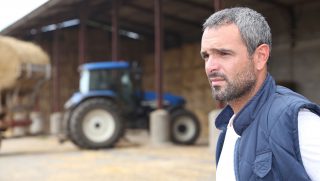The Hefty Brothers had a full house Tuesday at their 2017 Ag Ph.D. Agronomy Workshop in Baltic, South Dakota. Brian and Darren Hefty discussed everything from high yield plot results and corn herbicide programs to insecticides, fungicides, seed treatments, and more. While the agronomists didn’t have time to “cover” cover crops, their agronomy workshop proceedings had some good notes on the topic:
The good
Cover crops can keep soil in place while providing several other benefits such as: increased organic matter levels, reduced erosion, added nitrogen or other nutrients to the soil, reduced weed pressure, raised beneficial biological levels, reduced soil salinity, reduced compaction, and augmented forage for livestock.
The bad
There are also several latent disadvantages including the cost and return on investment. Cover crops can keep soil cold in the spring, can hurt soil microbes if the right blend is not used, and can host diseases and insects. There is often not a long enough growing season for cover crops and growers may need to inter-seed late in crop season. More times than not, farmers need to fill in the fall in dry weather or there may insufficient moisture for the next crop.
How to do cover crops well:
- Use a good blend. At a minimum use a grass and a broadleaf.
- The Hefty Brothers gets lots of questions about spring/summer herbicide carryover into fall cover crops. Their advice – worry first about the main crop and the best way to control weeds. Then pick cover crops that can survive the herbicides used.
- Growing season – as long as you have 60 days before your normal frost date, you probably have enough time to see good benefits with a cover crop.
- Estimate cost to be $10- $20 per acre, depending on the mix.


